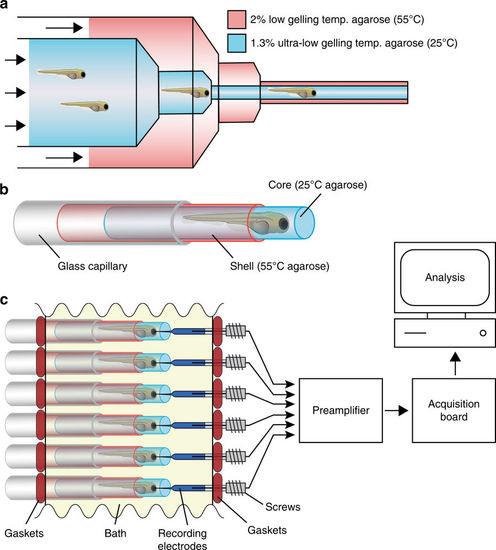Fig. 2
- ID
- ZDB-FIG-180517-7
- Publication
- Eimon et al., 2018 - Brain activity patterns in high-throughput electrophysiology screen predict bothádrug efficacies and side effects
- Other Figures
- All Figure Page
- Back to All Figure Page
|
High-throughput local field potential (LFP) recording platform. a Zebrafish larvae are transferred to liquid 1.3% ultra-low gelling temperature agarose (25?░C) and placed inside a 20?mL syringe. The 20?mL syringe is then inserted into a 60?mL syringe filled with 2% low gelling temperature agarose (55?░C). Syringes are capped with concentric 18-gauge and 16-gauge needles, respectively, allowing both agarose solutions to be simultaneously extruded into a room temperature bath where they rapidly gel. Up to 50 larvae can be embedded in a single extrusion. b Diagram of a zebrafish larvae embedded in an ultra-low gelling temperature agarose core surrounded by a rigid agarose shell. Embedded larvae are loaded into glass capillaries prior to LFP recording. c Schematic representation of the high-throughput LFP recording platform. Embedded larvae in glass capillaries are inserted into the platform in parallel directly opposite an array of glass recording electrodes. The water-tight recording chamber bath is filled with zebrafish embryo medium and the recording electrodes are advanced into the larvae using miniaturized screws. Up to 16 larvae can be recorded simultaneously using a 16-channel preamplifier connected to a low-power digital acquisition chip |

